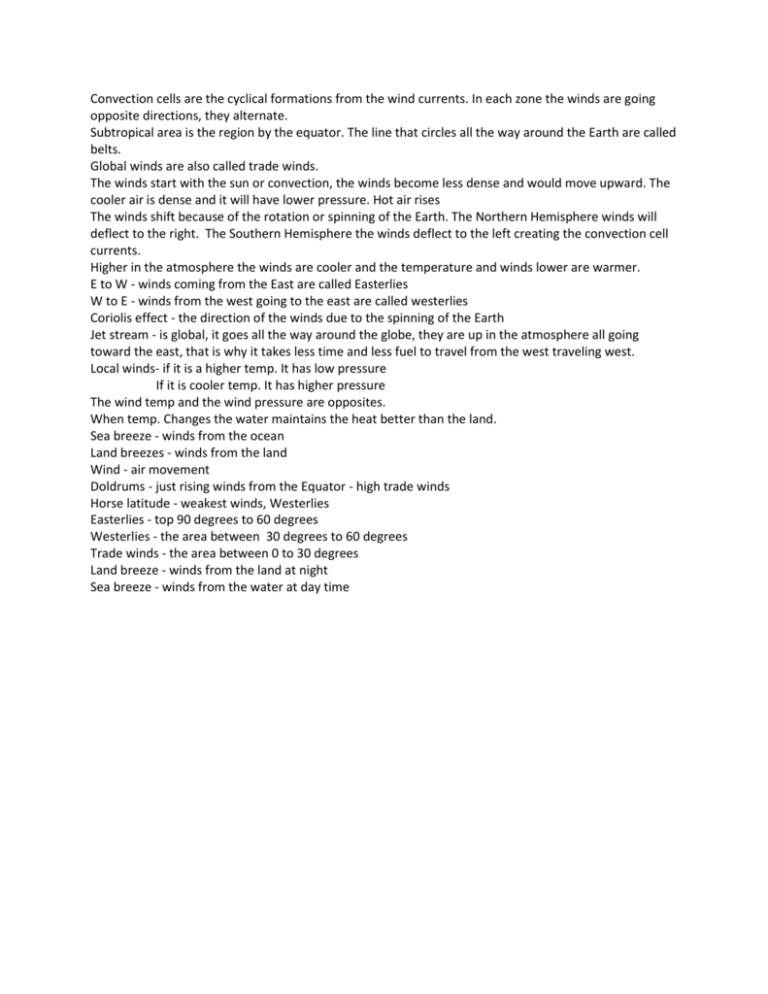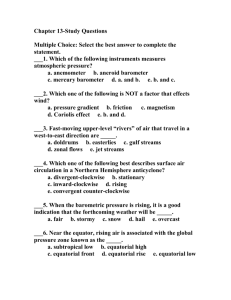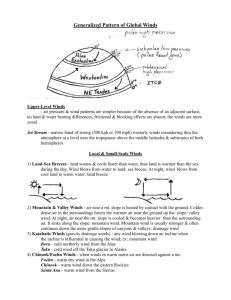notes from today
advertisement

Convection cells are the cyclical formations from the wind currents. In each zone the winds are going opposite directions, they alternate. Subtropical area is the region by the equator. The line that circles all the way around the Earth are called belts. Global winds are also called trade winds. The winds start with the sun or convection, the winds become less dense and would move upward. The cooler air is dense and it will have lower pressure. Hot air rises The winds shift because of the rotation or spinning of the Earth. The Northern Hemisphere winds will deflect to the right. The Southern Hemisphere the winds deflect to the left creating the convection cell currents. Higher in the atmosphere the winds are cooler and the temperature and winds lower are warmer. E to W - winds coming from the East are called Easterlies W to E - winds from the west going to the east are called westerlies Coriolis effect - the direction of the winds due to the spinning of the Earth Jet stream - is global, it goes all the way around the globe, they are up in the atmosphere all going toward the east, that is why it takes less time and less fuel to travel from the west traveling west. Local winds- if it is a higher temp. It has low pressure If it is cooler temp. It has higher pressure The wind temp and the wind pressure are opposites. When temp. Changes the water maintains the heat better than the land. Sea breeze - winds from the ocean Land breezes - winds from the land Wind - air movement Doldrums - just rising winds from the Equator - high trade winds Horse latitude - weakest winds, Westerlies Easterlies - top 90 degrees to 60 degrees Westerlies - the area between 30 degrees to 60 degrees Trade winds - the area between 0 to 30 degrees Land breeze - winds from the land at night Sea breeze - winds from the water at day time







